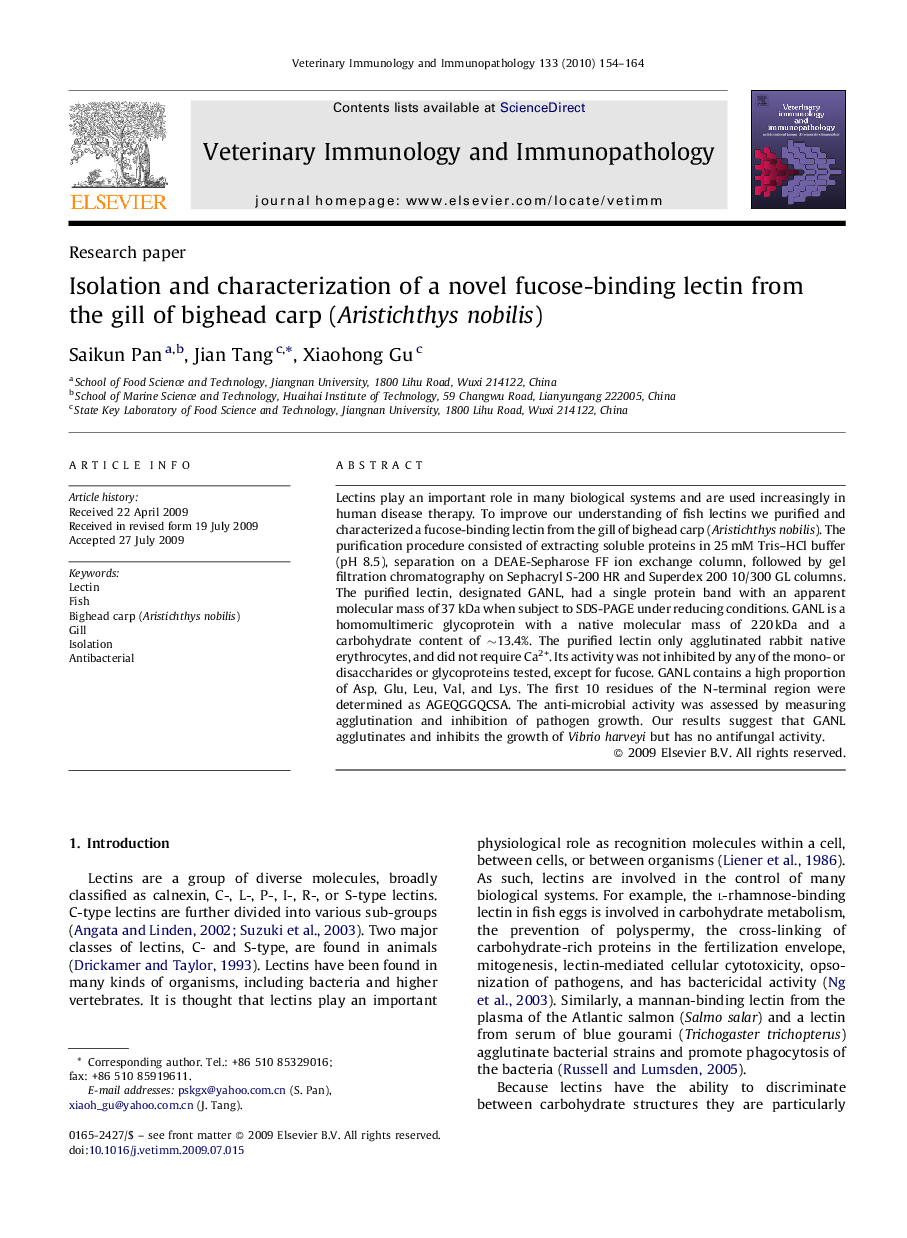| Article ID | Journal | Published Year | Pages | File Type |
|---|---|---|---|---|
| 2462489 | Veterinary Immunology and Immunopathology | 2010 | 11 Pages |
Lectins play an important role in many biological systems and are used increasingly in human disease therapy. To improve our understanding of fish lectins we purified and characterized a fucose-binding lectin from the gill of bighead carp (Aristichthys nobilis). The purification procedure consisted of extracting soluble proteins in 25 mM Tris–HCl buffer (pH 8.5), separation on a DEAE-Sepharose FF ion exchange column, followed by gel filtration chromatography on Sephacryl S-200 HR and Superdex 200 10/300 GL columns. The purified lectin, designated GANL, had a single protein band with an apparent molecular mass of 37 kDa when subject to SDS-PAGE under reducing conditions. GANL is a homomultimeric glycoprotein with a native molecular mass of 220 kDa and a carbohydrate content of ∼13.4%. The purified lectin only agglutinated rabbit native erythrocytes, and did not require Ca2+. Its activity was not inhibited by any of the mono- or disaccharides or glycoproteins tested, except for fucose. GANL contains a high proportion of Asp, Glu, Leu, Val, and Lys. The first 10 residues of the N-terminal region were determined as AGEQGGQCSA. The anti-microbial activity was assessed by measuring agglutination and inhibition of pathogen growth. Our results suggest that GANL agglutinates and inhibits the growth of Vibrio harveyi but has no antifungal activity.
